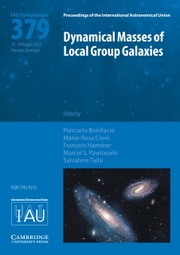No CrossRef data available.
Article contents
Unsupervised classification: a necessary step for Deep Learning?
Published online by Cambridge University Press: 01 August 2025
Abstract
Deep-learning algorithms have gained much popularity in the past decade. However, their supervised nature makes them fully dependent on the quality and completeness of the data samples used in the training processes. And when it comes to galaxy spectra for instance, there is simply no suited training sample available yet. This is where unsupervised classification (clustering) can come to the rescue.
Using the discriminant latent mixture-model based algorithm Fisher-EM, we 1) demonstrate the discriminative capacity of the method and its robustness with respect to noise on a sample of galaxy spectra simulated with the code CIGALE, 2) manage to classify ∼700 000 spectra of galaxies from the SDSS, and 3) extend this classification to higher redshifts thanks to the VIPERS data (∼80 000 spectra up to a redshift of 1.2). Finally, it appears that FisherEM is efficient for images of galaxies as well.
Information
- Type
- Contributed Paper
- Information
- Proceedings of the International Astronomical Union , Volume 19 , Symposium S368: Machine Learning in Astronomy: Possibilities and Pitfalls , August 2023 , pp. 63 - 66
- Copyright
- © The Author(s), 2025. Published by Cambridge University Press on behalf of International Astronomical Union


